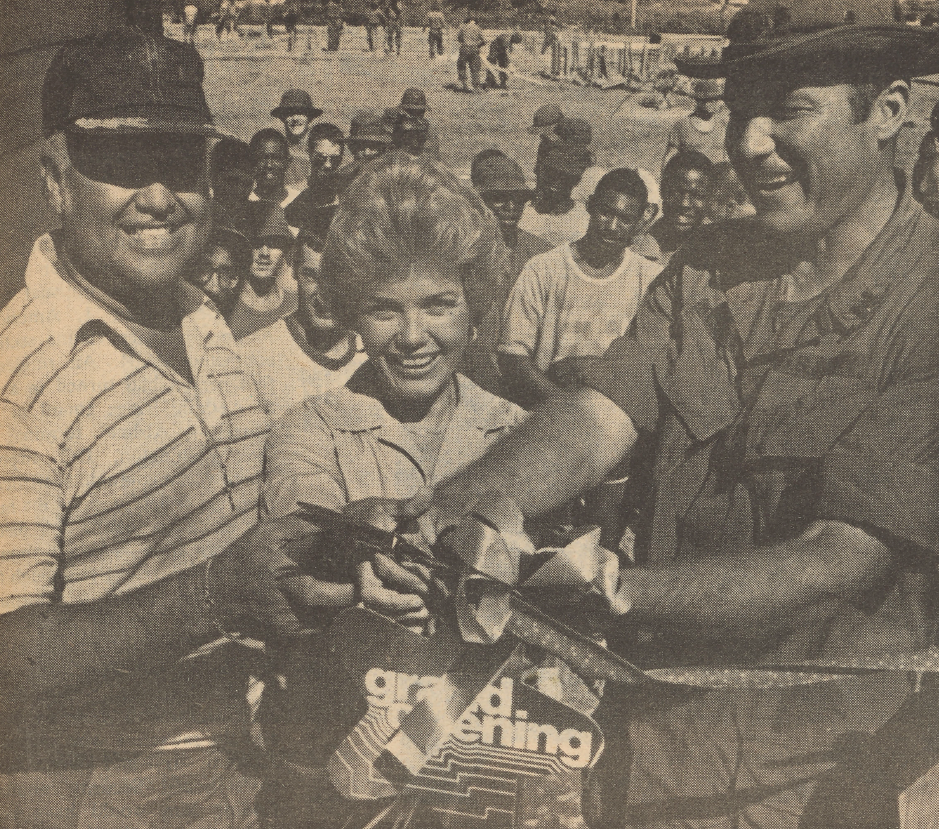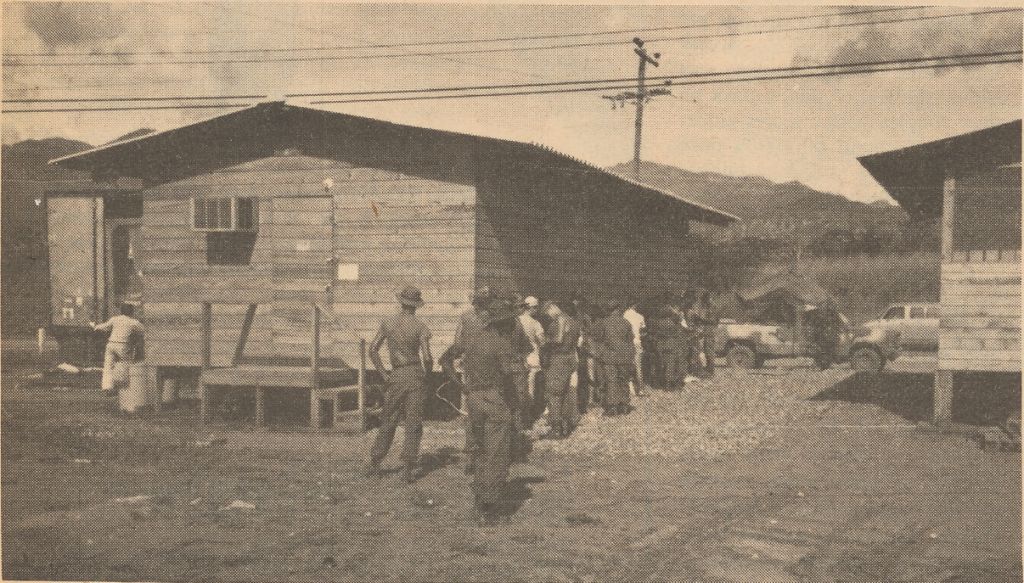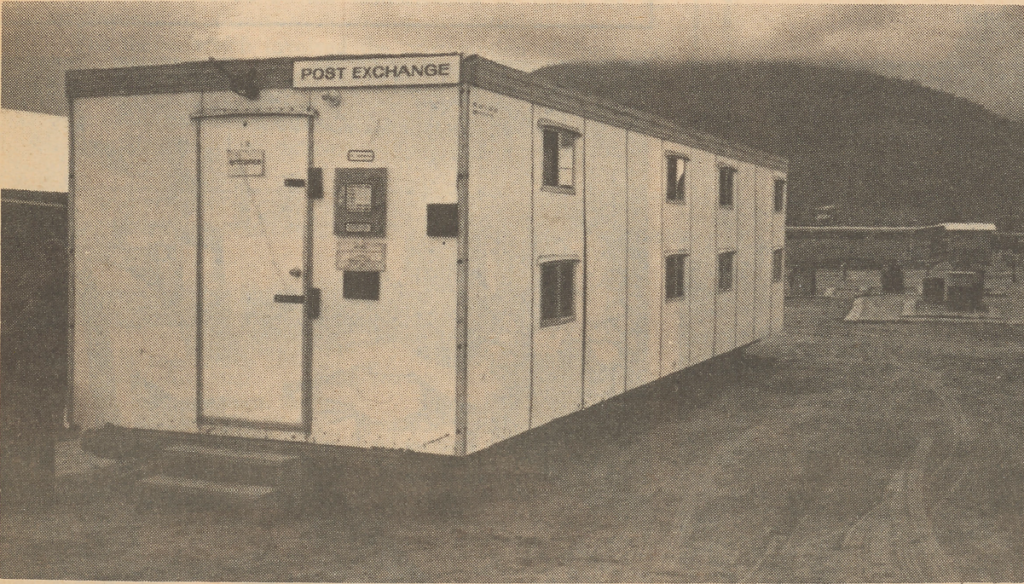Flashback Friday: 1983—The Exchange Comes to Honduras

On Sept. 13, 1983—41 years ago this weekend—a tactical field Exchange (TFE) opened in Comayagua, Honduras. Two more rapidly followed in the Central American country, one opening Sept. 17 in San Lorenzo and the other on Sept. 24 in Puerto Castilla.
In July of that year, the U.S. Military Command in Panama contacted then-general manager Frederick Wallmark, requesting Panama Area (PAAX) support of exercises in Honduras that would be known as Ahuas Tara II.
Honduras is the second-largest country in Central America—but it’s still only 43,433 square miles, which is slightly larger than Virginia. In 1980, its population was 3.69 million. About 70% lived in rural communities. The TFEs were set up in three of the country’s four main regions.
The Comayagua TFE was set up in the mountainous interior, which comprises 60% of Honduras. “The pine forests of this area reminded me of northern Georgia,” Exchange Personnel Manager Franklin W. Jones, who traveled to the country in September to determine correct procedures for hiring local nationals, wrote in the December 1983 Exchange Post.
San Lorenzo lies in the southern coastal region, facing the Gulf of Fonseca and the Pacific Ocean. Puerto Castilla is on the Caribbean in the northern coastal region.
The project officer assigned to Honduras had to be bilingual and have a retail background. Carlos Celis, a PAAX retail branch operations manager who had been with the Exchange 22 years, was chosen for the job.
Because of plans to establish concessions such as giftware, barber and beauty shops, Marie Barraza, PAAX services supervisor, was selected as assistant project officer. Celis and Barraza (pictured above at the San Lorenzo grand opening, along with San Lorenzo commander LTC John I. Klaczzkie) traveled to Honduras in August to begin coordinating the project.
Celis and Barraza lived in the capital city, Tegucigalpa, and commuted 90 minutes one-way daily to the Comayagua TFE. “They may leave at 4:30 in the morning and not return until 7 or 8 at night,” Jim Mara, an auditor who visited the region, told the Exchange Post. “We had to put in 60 hours just to keep up with them during the week.”
The exchanges were staffed with Panamanian employees on temporary duty until Hondurans could be recruited. The buildings at Comayagua and San Lorenzo were 48- by 16-foot wooden structures furnished by the U.S. Army. The Puerto Castilla TFE was a 10- by 40-foot house trailer leased by the Army at no charge to the Exchange.

Lines form outside the Exchange in Comayagua, Honduras, in a 1983 Exchange Post photo.
Each store had a capacity of 15 to 20 people, who could shop from a selection of slightly more than 300 items, consisting primarily of beverages, snacks and health and beauty items. Reportedly, 100 Soldiers were standing in line an hour before the Comayagua TFE opened on Sept. 14. The store was supposed to be open only from 3 to 8 p.m., but after a power outage interrupted shopping, closing was extended to 8:30.
Sila Marrero, PAAX accounting manager, established a local bank account for payroll and local purchases. After finalizing documentation at the Banco Central de Honduras, Barraza and Marrero rushed to the airport for a return flight to Panama. They ran a red light and were stopped by police, who demanded that the ticket be paid before they left Honduras. Knowing they would miss their flight, Marrero said she began praying out loud and Barraza began crying. The police officer relented and sent them on their way.
Fred Knight, retail specialist at Southeast Exchange Region, was in Honduras to help Celis open the Puerto Castilla store. The two departed the site for Tegucigalpa, the capital, on Sept. 25 by Black Hawk helicopter. Bad weather forced the pilot to land north of the capital in the village of Agalteca. Celis said they were immediately surrounded by “every mule, cow, chicken and person in the town.”
Celis, the only Spanish speaker in the group, learned that the townspeople were concerned that the “invaders” were Communist guerrillas. Once Celis assured them they were Americans, the group was warmly received and spent the night in one of the town restaurants.
The Exchange was scheduled to be in Honduras for six to nine months, or until the end of Ahuas Tara II exercises in 1984. The country isn’t mentioned again in Exchange Post archives until 1987, and then it’s only in brief reports about associates PCSing.

The Puerto Castilla tactical field Exchange in a 1983 Exchange Post photo.
But in 1988, things heated up. President Reagan sent 3,200 troops to Honduras in March, and activity increased at Exchange facilities supporting Golden Pheasant exercises. The Honduras Exchange team was faced with a sudden doubling of its clientele. The facilities included a main exchange at Palmerola, a Honduran air base 40 miles north of Tegucigalpa, and three remote annexes. Palmerola is now known as Soto Cano.
In 1999, Honduras was in Exchange news again as four TFEs were set up—one apiece in Honduras, El Salvador, Guatemala and Nicaragua—to support U.S. forces deployed to Central America on a humanitarian mission after Hurricane Mitch struck. As the support drew down months later, the Exchange worked to expand facilities in Soto Cano, Honduras.
By November, a movie theater had opened in Soto Cano. Weeks later, a new, larger, more modern Exchange, complete with food court, opened. The Exchange still maintains a store in Soto Cano, which is part of the Puerto Rico Exchange. Operations moved into a new building in early 2024.




